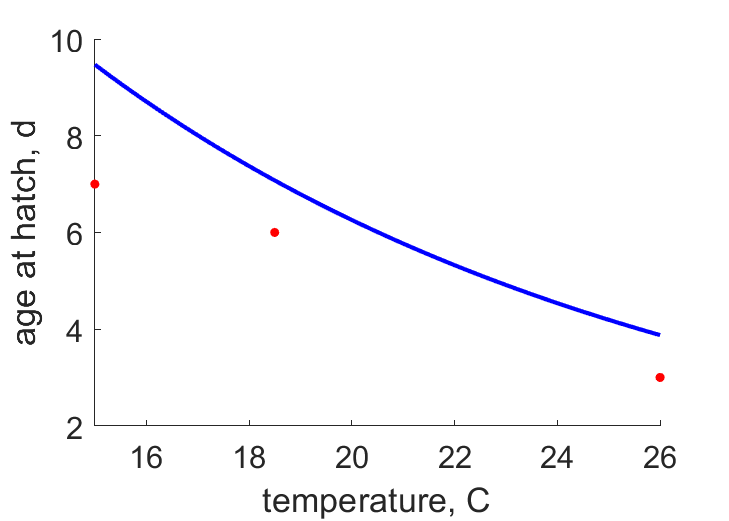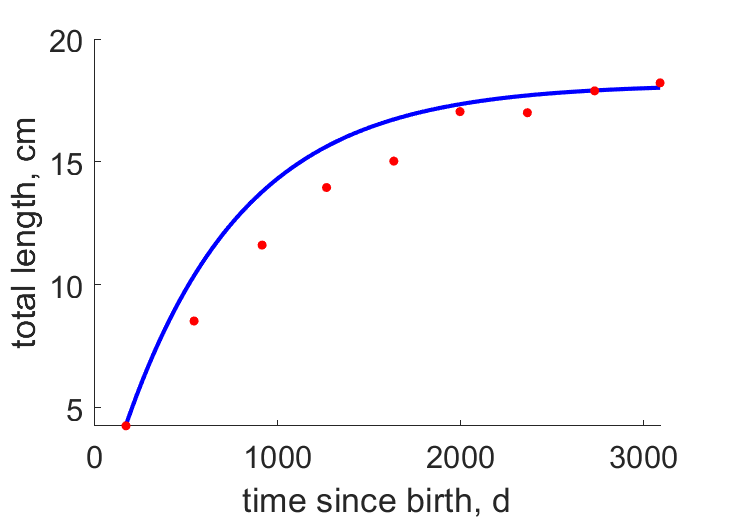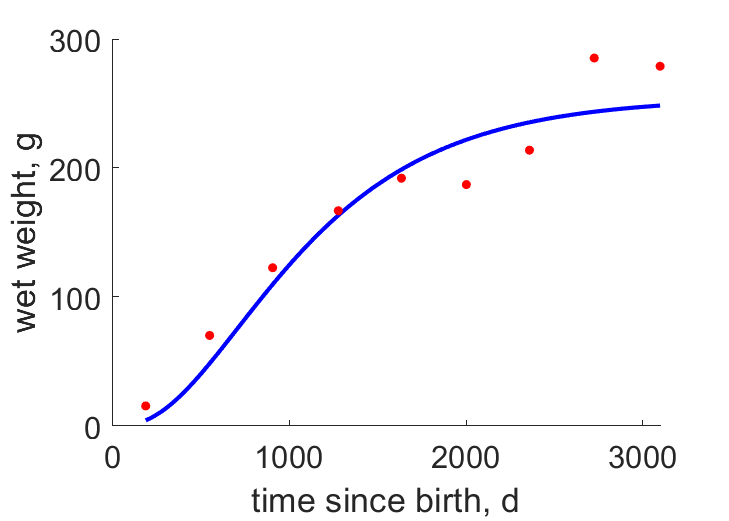Predictions & Data for this entry
| Model: abj | climate: Cfb, Dfb | migrate: Mp | phylum: |
| COMPLETE = 2.5 | ecozone: THp | food: biCi, biHl, biD | class: |
| MRE = 0.136 | habitat: 0iFp, 0iFm, 0iFl | gender: D | order: |
| SMSE = 0.076 | embryo: Fh | reprod: O | family: |
Zero-variate data
| Data | Observed | Predicted | (RE) | Unit | Description | Reference |
|---|---|---|---|---|---|---|
| tp | 1642 | 1524 | (0.07204) | d | age at puberty for females | Wijm2009 |
| tpm | 1460 | 1420 | (0.02722) | d | age at puberty for males | Wijm2009 |
| am | 3650 | 3718 | (0.01858) | d | life span | Wijm2009 |
| Lh | 0.5 | 0.173 | (0.654) | cm | total length at hatch | Wijm2009 |
| Lb | 0.725 | 0.1767 | (0.7562) | cm | total length at birth | Wijm2009 |
| Li | 50 | 62.4 | (0.248) | cm | ultimate total length | Wijm2009 |
| Wwb | 0.00052 | 0.0004986 | (0.04121) | g | wet weight at birth | Wijm2009 |
| Ri | 1370 | 1148 | (0.1617) | #/d | max reprod rate | Wijm2009 |
Uni- and bivariate data
| Data | Figure | Independent variable | Dependent variable | (RE) | Reference |
|---|---|---|---|---|---|
| Tah |  | temperature | age at hatch | (0.1339) | Wijm2009 |
| tL |  | time since birth | total length | (0.05578) | Wijm2009 |
| tW |  | time since birth | wet weight | (0.1271) | Wijm2009 |
Pseudo-data at Tref = 20°C
| Data | Generalised animal | Carassius carassius | Unit | Description |
|---|---|---|---|---|
| v | 0.02 | 0.02888 | cm/d | energy conductance |
| p_M | 18 | 37.04 | J/d.cm^3 | vol-spec som maint |
| k_J | 0.002 | 0.002 | 1/d | maturity maint rate coefficient |
| k | 0.3 | 0.2789 | - | maintenance ratio |
| kap | 0.8 | 0.9781 | - | allocation fraction to soma |
| kap_G | 0.8 | 0.8099 | - | growth efficiency |
| kap_R | 0.95 | 0.95 | - | reproduction efficiency |
Discussion
- Males are assumed to differ from females by E_Hp only
- The high maintenance, compared to other family members, is probably linked to farming selection, to boost production
Bibliography